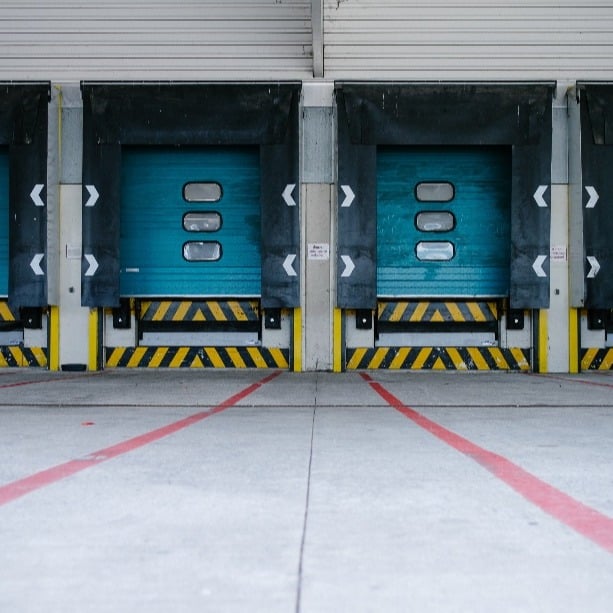Commercial shipping and logistics are both complex industries that involve many moving parts. Services include shipments traveling from business to business or business to a residence. Being able to track various assets throughout all stages of a shipment’s lifecycle is critical to maintaining a streamlined and uninterrupted workflow. From inventory management, supply, and transportation all the way to warehousing and customer/business response – an asset tracking hardware system can help enhance these commercial shipping and logistics processes.
There are various asset tracking hardware devices, such as the newly released Apple AirTag for consumers, to enable better asset management. However, larger enterprises need to ensure they have a system in place created specifically for commercial atmospheres. Let’s take a look at the top 3 ways asset tracking hardware can improve commercial shipping and logistics processes.
1. Minimize Asset Loss
The biggest benefit of asset tracking hardware is that it greatly helps to minimize the loss of an enterprise’s critical assets. With millions of dollars of equipment lost or stolen each year, companies could see an immediate ROI by investing in a system that deters theft and minimizes loss.
On average, 75% of a business’s equipment remains not lost or stolen, to boost that number many businesses have been seeking additional security through asset tracking systems. Often, the very presence of asset tracking hardware is enough to deter theft, saving your company time and money trying to recover lost items.
Attaching asset tracking hardware to each asset, then integrating it with the accompanying asset tracking IoT software, will provide a clear look at where your asset currently is. Knowing where your assets are at any given time can improve your company’s efficiency. RFID or Bluetooth Low Energy (LE) enabled by Link Labs AirFinder work well for these objectives because the system’s battery life lasts for years while providing real-time location data with high-level accuracy. Other systems that operate using UWB, like the Apple AirTag, do not last as long and do not always provide location updates as it functions off of a user-based network.
2. Asset Monitoring and Management
The uncertainty of an asset’s location in transit or throughout a facility can be resolved with the help of asset tracking technology, such as Link Labs AirFinder OnSite or AirFinder Everywhere that provides real-time location data.
Whether the asset requires indoor, outdoor, or a combination of both for asset tracking, the right fit can be established. Most likely, commercial shippers will require both. That way such companies can track an asset's location from the point of origination to destination. RTLS technology is crucial to the basic management of assets in transit.
Aside from real-time location data, asset tracking hardware paired with a software system can show additional information about the status of your asset. Based on the software that you have, the asset’s temperature, condition, and maintenance needs can all be monitored. Any issues that arise will be reported to the asset tracking system via the hardware attached to the asset.
This visibility across your assets can prevent monetary loss through missed maintenance issues or misplaced assets. Knowing the condition of the shipped items will improve decision-making and efficiency along the way. The increased visibility can help with the positioning of assets before and after transit.
The AirFinder solution shows all of the asset critical data that your business needs to enable better asset management. More consumer-based solutions, like AirTag, only allow its users to see location data – a huge miss for commercial shipping and logistics.
3. Avoiding Additional Work
The third benefit associated with asset tracking hardware is the decisions that can be made based on information that is sent by the asset tracker. Increased visibility in real-time can save the company valuable time should a problem arise and to help better manage assets.
As shipments travel locally, nationally, or internationally, problems can arise that cause assets to be delayed or compromised. The consistent data provided by asset tracking hardware can provide this information to the business every step along the way and can save money by tracking down shipments quickly.
The amount of time, resources, and money spent trying to gather this information without asset tracking hardware is enough to encourage a company to invest.
Productivity can be greatly increased through the use of the Link Labs AirFinder solution. With auto-generated reports, businesses are able to spend more time focusing on tasks that require manual labor. With AirTag, on the other hand, there is a lack of critical information reporting and scalability to keep up with the commercial shipping and logistics industries' ever-changing needs, which could require more work and maintenance down the line.
Wrapping it Up
The commercial shipping industry is going to continue growing. To better manage a constantly growing industry, and the constantly moving assets within your company, consider asset tracking hardware. Request a demo today to see how asset tracking can be customized to your business’s specific needs with AirFinder.





